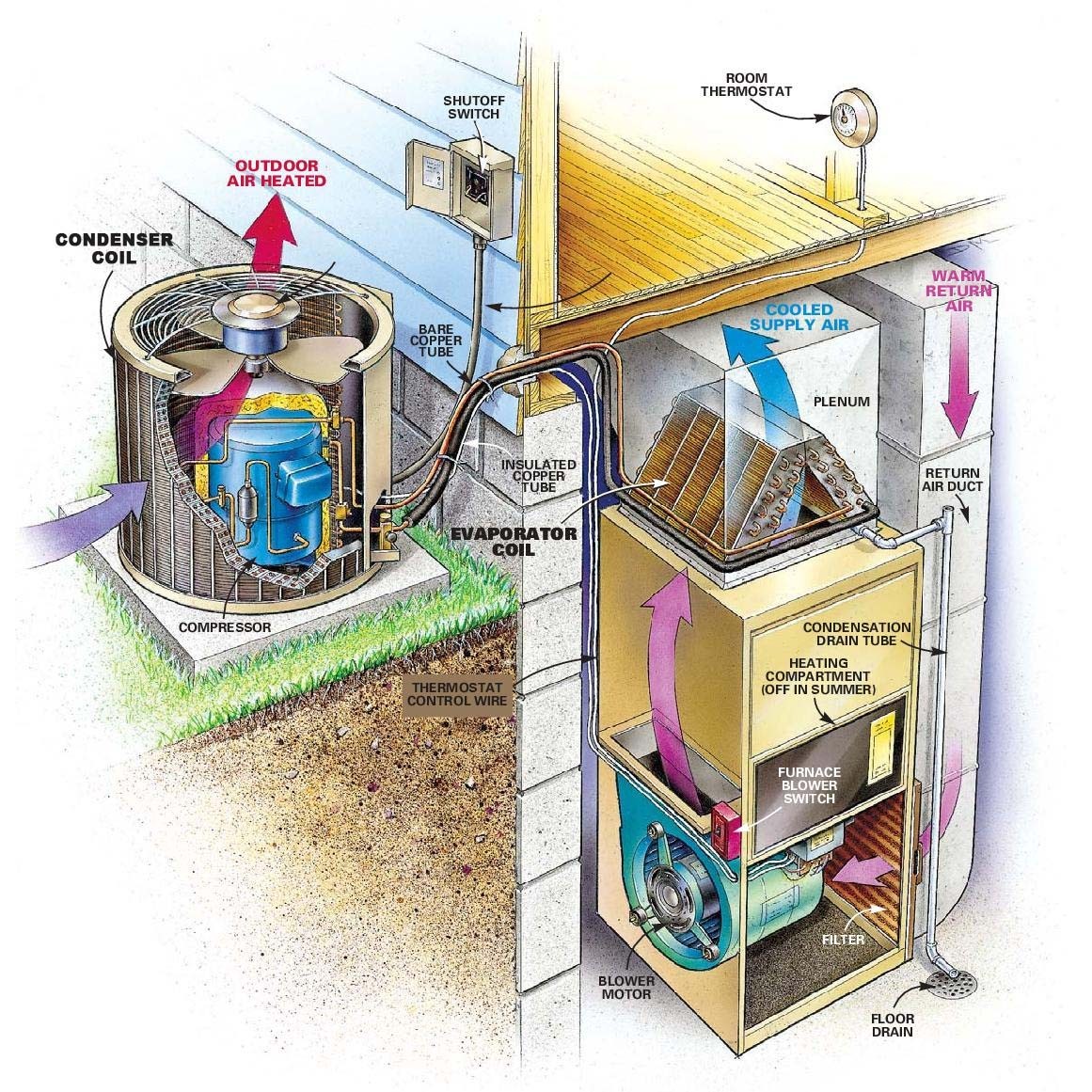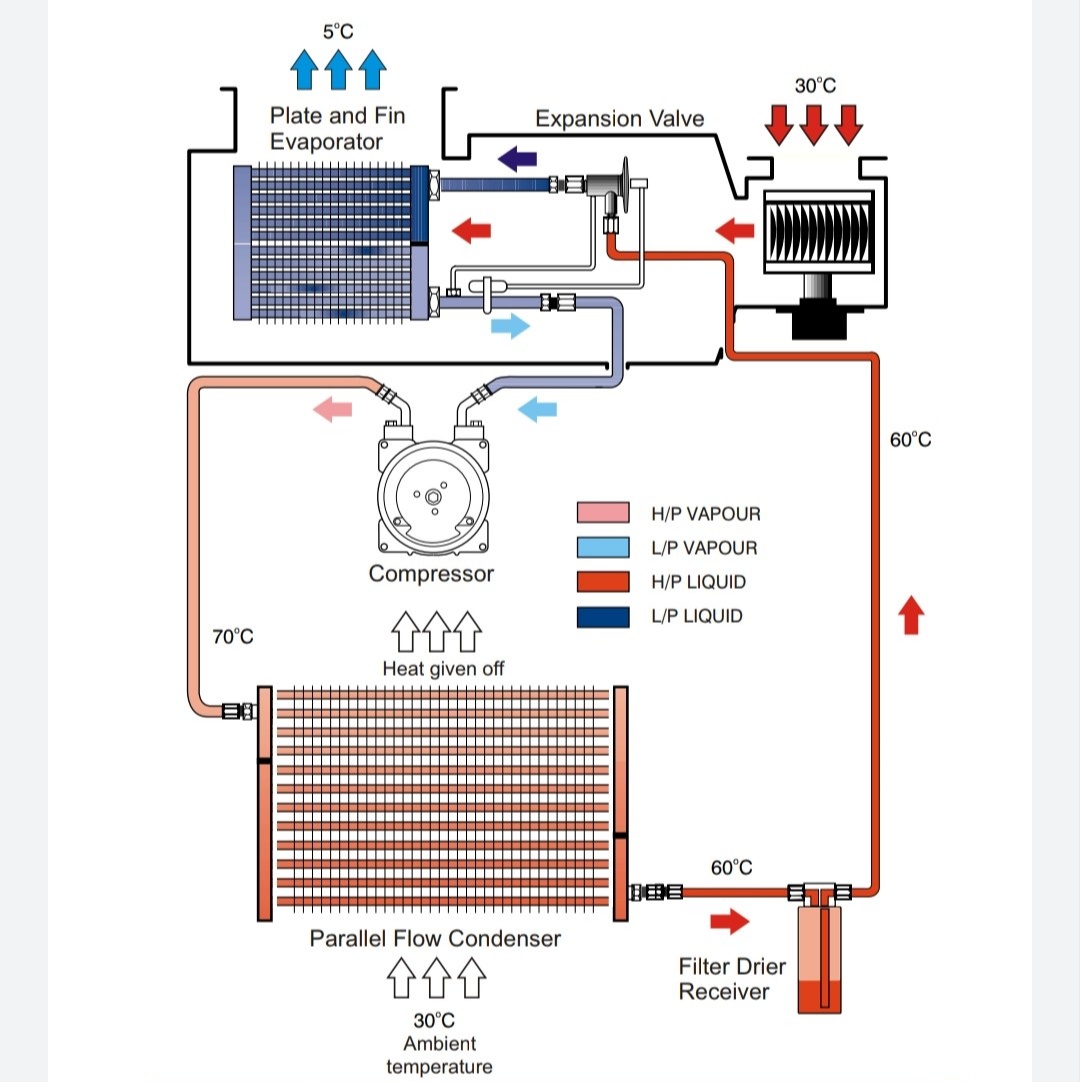Decoding Your Car's AC: A Look at the Components Diagram
Ever wondered what keeps you cool during scorching summer drives? It's more than just cold air; it's a complex system working in harmony, orchestrated by the blueprint we call the car air conditioner components diagram. This schematic isn't just for mechanics; it's a valuable tool for anyone who wants to understand, maintain, or even troubleshoot their vehicle's AC system.
Imagine your car's AC as a miniature refrigeration system. It follows the same basic principles, utilizing a refrigerant to absorb heat from the cabin and release it outside. The components diagram is the map of this system, showing how each part contributes to this cooling cycle. From the compressor that pressurizes the refrigerant to the evaporator that absorbs the heat, understanding the interplay of these components is key to a comfortable driving experience.
The earliest forms of automotive air conditioning can be traced back to the 1930s, with the first systems being bulky and inefficient. Over the decades, advancements in technology led to more compact, efficient, and environmentally friendly systems. The evolution of the car AC mirrors the progress of automotive technology itself, with each component being refined for optimal performance and reliability.
A common issue that plagues car AC systems is leakage of refrigerant. Pinpointing the source of a leak can be challenging without a proper understanding of the components diagram. The diagram helps identify potential leak points, such as connections, hoses, or even the compressor itself. This knowledge can save you time and money by allowing you to focus your troubleshooting efforts effectively.
The car air conditioning system schematic is more than just a drawing; it’s a functional representation. It reveals how the compressor, condenser, expansion valve, and evaporator work together. The compressor, driven by the engine, pressurizes and circulates the refrigerant. The condenser, located at the front of the car, releases the absorbed heat. The expansion valve regulates the flow of refrigerant, while the evaporator, positioned inside the dashboard, absorbs heat from the cabin air. This cyclical process, visually represented in the diagram, is the essence of automotive air conditioning.
One benefit of understanding a car AC components diagram is the ability to perform basic diagnostics. If your AC isn't blowing cold air, the diagram can help you identify potential culprits. Perhaps the compressor isn't engaging, or the condenser fan isn't running. This visual guide empowers you to take informed action, whether it's a DIY fix or a conversation with a mechanic.
Another advantage is preventative maintenance. Knowing the location and function of components like the receiver/drier helps you understand why regular maintenance is crucial. The receiver/drier removes moisture from the refrigerant, preventing corrosion and damage to the system. The diagram allows you to appreciate the role of each component in the system’s longevity.
Finally, the diagram fosters a deeper understanding of your vehicle. It's not just about fixing a problem; it's about comprehending how a complex system works. This knowledge empowers you as a car owner, allowing you to make informed decisions about maintenance and repairs.
A practical example: If your AC is blowing warm air, consult the components diagram. Trace the refrigerant path and check if the compressor is cycling. If not, the problem might lie with the compressor clutch or the electrical system. The diagram provides a systematic approach to troubleshooting.
Another example: Imagine you notice a leak under your car. Referring to the components diagram can help you determine if the leak is related to the AC system. It might be refrigerant oil or condensate, indicating a potential issue with a hose, connection, or component. The diagram helps differentiate between different types of leaks.
Advantages and Disadvantages of Understanding Car AC Component Diagrams
| Advantages | Disadvantages |
|---|---|
| Improved Troubleshooting | Can be complex for beginners |
| Better Communication with Mechanics | Requires some technical knowledge |
| Empowered Maintenance | Diagram variations between car models |
One best practice for utilizing a car AC components diagram is to always consult the diagram specific to your car's make and model. Different vehicles have variations in their AC systems, and using the wrong diagram can lead to misdiagnosis and incorrect repairs.
Frequently Asked Questions:
1. What is the main function of the compressor? (Compresses refrigerant)
2. What does the condenser do? (Releases heat)
3. What is the purpose of the expansion valve? (Regulates refrigerant flow)
4. Where is the evaporator located? (Inside the dashboard)
5. What are common signs of a refrigerant leak? (Warm air, hissing sounds)
6. How often should I have my car's AC serviced? (Annually or as recommended by the manufacturer)
7. Can I add refrigerant to my car's AC myself? (It's best to consult a certified technician)
8. What is the role of the receiver/drier? (Removes moisture from the refrigerant)
In conclusion, the car air conditioner components diagram is an invaluable tool for understanding, maintaining, and troubleshooting your vehicle’s AC system. It empowers you to take a more proactive role in your car's upkeep, leading to a more comfortable and reliable driving experience. From identifying potential problems to communicating effectively with mechanics, the diagram provides a crucial roadmap to navigating the intricacies of automotive air conditioning. By familiarizing yourself with this schematic, you gain a deeper understanding of your vehicle and equip yourself with the knowledge to keep cool, no matter the temperature outside. Embrace the power of the components diagram, and you’ll be well-prepared to handle any AC challenge that comes your way. Understanding your car's air conditioning system empowers you to make informed decisions, potentially saving you time and money in the long run. So, the next time you feel that cool blast of air on a hot day, remember the intricate system behind it and the diagram that unlocks its secrets.
Happy 40th birthday images gif
Unleash your inner icon nike superfly mercurial cr7 cleats
The invisible ink exploring uv tattoo reactions














